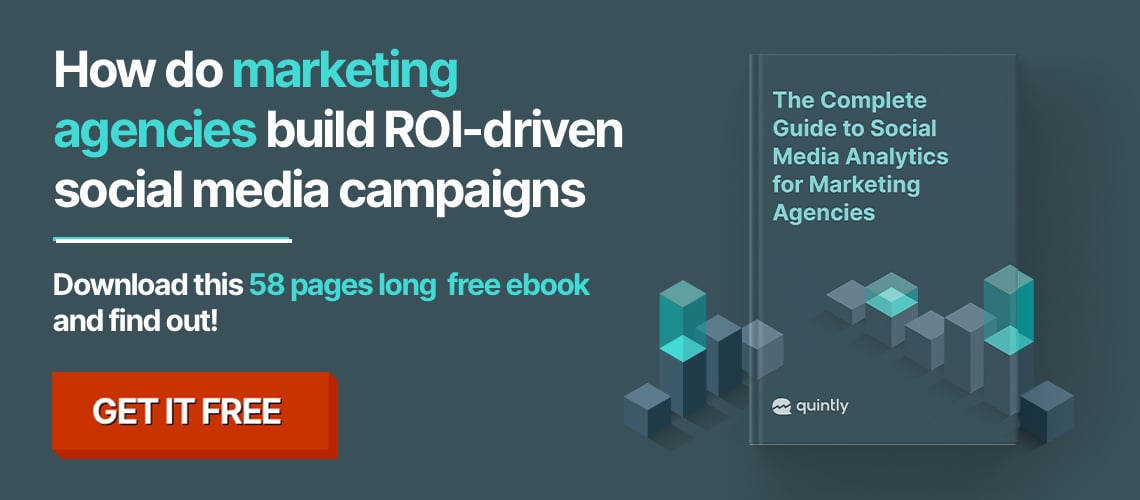
Social media is the perfect place for conversational marketing. As conversational marketing grows in popularity across many different platforms, it’s crucial that you implement it correctly to drive engagement and conversions on social.
In this article, we’ll be covering everything you need to know about conversational marketing in social media. We’ll dive into what it is exactly and how it works, as well as how you can use it to your advantage.
First, what is conversational marketing?
Conversational marketing is a quick way to move your customers along your marketing and sales funnel so that they go from being interested to finally purchasing a product.
Brands all over the world are implementing conversational marketing to nurture relationships and turn one-time buyers into loyal customers. And it has been proven time and time again to work—with research showing that 52% of consumers are more likely to make repeat purchases if the company offers support via live chat—and 79% of companies say that live chat has had positive results for customer loyalty, sales, and revenue.
In essence, conversational marketing involves being available to talk one-on-one with your customers 24/7, in real-time via a variety of different ways and on different channels. It provides a solution to a major need of customers today, most of whom want companies to communicate with them instantly.
Let’s break it down further into three stages:
Engage
At the first stage of conversational marketing—you will engage people. You can do this using proactive chat tactics.
If a potential customer is browsing your website, for example, instead of displaying a pop-up up or a lead generation form—use an intelligent chatbot to start a conversation.
A chatbot makes your customer’s experience more personal by providing more information about the products they are browsing or have in their basket.
Chatbots also offer the opportunity to act as a lead generational tool by gathering email addresses and phone numbers. Find a full evaluation on pros & cons of chatbots here.
Understand
The chatbot you design should ask similar questions that your team would use when qualifying a lead. By asking these questions, you can gather the information that helps you better understand your audience and where each individual is along their buying journey.
You can also build a chatbot that responds to these questions in a timely manner, almost instantly—creating an instant exchange of dialogue. Instead of taking days, your visitors will be guided further down your marketing funnel at that very moment—removing the need for your prospects to wait for follow-up emails.
Offering this type of experience demonstrates to the customer that you respect, value, and genuinely want to help them, and that you provide excellent customer assistance.
Recommend
There will be visitors that always require more guidance and will need to be passed onto to engage in human-to-human interaction.
You can design a chatbot that routes users to the most suitable sales rep, for example. This will usually be at the last stage of your sales funnel. You can even integrate your employee’s calendars with your chatbot so a time and date can be scheduled there and then for a call to take place at a later date.
These types of tasks are time-consuming for your employees, and by handing them over to your chatbot your company will save resources in the long run.
Chatbots can also nurture leads in a different way by recommending pieces of content or other web pages that may be more useful to them.
How to implement conversational marketing on social media
For conversational marketing to be effective and have the most impact, you need to tie it into your social media marketing. Here are a few ways to do that:
Personalize relationships on Facebook Messenger
Research has shown that 20 billion messages are shared each month between businesses and their customers on Facebook Messenger, which suggests that your customers may want to use this channel to get in touch with you.
Indeed, Messenger is one of the best channels to market your brand online—and it’s the perfect place to implement conversational marketing.
Conversational marketing on Facebook Messenger largely involves chatbots answering common questions, basic user queries, and starting conversations that are related to your business. They could include:
- Responding to comments on posts
- Provide order updates
- Schedule appointments
- Discuss your shipping options
- Share coupons
The idea is that a customer who uses Facebook for socializing is already on the app, and therefore can get in touch with you easily. They can initiate a conversation and gather the helpful information they need to take the next step that moves them further along your funnel.
Let’s take a look at how a Facebook Messenger bot can start a conversation.
If someone comments on one of your posts to receive a free guide, a bot has the ability to message them with an automated intro. This intro will instruct the person on what they need to do next, such as clicking on a link.
Slide into Instagram direct messages
You might have thought that only those looking to date slide into Instagram DMs, and that businesses should stay away.
But that isn’t true at all.
In fact, if you’re not sliding into a customer's Instagram DMs, your rivals are beating you to the punch.
More importantly, your customers are likely spending a ton of time there too. In fact, there are now over a billion people using Instagram around the world. And they don’t just use Instagram to interact with their friends. In fact, many customers now use IG to visit a company’s profile and to ask questions about a product or service.
Since a successful conversational marketing strategy requires you to meet your customers where they are and interact with them at all times—how can a business offer this on Instagram?
By automating your DMs.
This can be done by using a chatbot that will respond to your Instagram audience instantly. If a potential customer asks you about a sale and mentions a predetermined keyword or phrase, for example, your chatbot can provide a personalized and helpful response in their DMs.
You can also DM an Instagram user and offer more assistance when they leave a comment on one of your posts asking for help.
When your business implements conversational marketing on Instagram it will help build your reach, brand awareness, and relationships. You can highlight sales and discounts or simply provide better customer support.
Collect customer data straight from the source
What does data straight from the source mean?
It’s when you collect first-party data straight from your customers and use it to provide a better, more comprehensive, and more personalized user experience.
For instance, chatbots can converse with your customers and answer their queries all while collecting data.
There are various ways a chatbot can collect data. First, they use AI to automatically collect, store and then use data based on each interaction. This allows the bot to learn more about each customer's needs with each conversation, thus allowing it to provide a quicker, more useful response the next time around.
Second, the bot can ask questions/provide surveys that the end user answers.
Once you’ve got the data it’s then up to you to make it worthwhile by analyzing it and providing a better customer experience going forward.
Benefits of conversational marketing on social media
As we’ve seen, conversational marketing in social media lets you talk to your customers one-on-one and help solve their problems there and then.
This in turn brings many benefits. Let’s take a look at a few of them:
i. Improve conversion rates
The end goal of marketing is always to improve conversion rates. By solving more customer problems while at the same time building relationships in real-time, conversational marketing can boost your conversion rates.
ii. Uncover more pain points
It’s by talking to people that we get to understand their pain points. As mentioned, a chatbot can uncover a customer’s pain point during a conversation, or it can collect customer data that you can later analyze to uncover pain points. This then allows you to resolve more problems in the future and offer a more valuable experience.
iii. Achieve higher customer satisfaction
Naturally, customers want to purchase high-quality products and services from you. But they want to form a lasting relationship with a company that’s built on shared values and trust.
By putting the customer first with conversational marketing (providing them with near-instant responses, listening, understanding, and reacting), you’ll see that customer satisfaction goes up.
Final thoughts
Conversational marketing is more than just marketing. It combines the art of listening with the art of knowing how to nurture your customer so that you’re able to move them along the sales funnel faster than ever before.
Social media, meanwhile, has all the tools ready for you to use that will help you easily fit conversational marketing into your game plan. Create a strategy, work with the right tools - and keep in mind the fundamentals: engage, understand, recommend.
Further reading recommendation: Social Media and Artificial Intelligence: A Match Made in Heaven?



Join the conversation. Leave us a comment below!